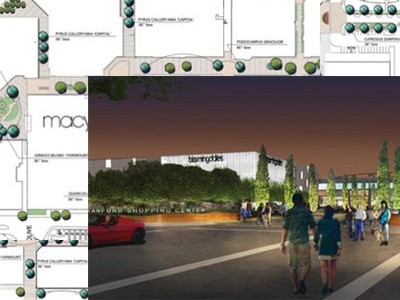With only a couple of days to go before even the most reticent of retailers – those who feel they must restrain the Christmas glee at least until after Halloween – unleash two months of merchant mania, it’s a good time to check in on the health of area shopping malls, strip centers and Main Street districts.
Two interesting takes on a recent report from Reis Inc., the commercial real estate analysts, are springboards for local versions. First, the Bloomberg headline: “U.S. mall occupancies reach four-year high.” Vacancy rates fell to the lowest since early 2009, and rents gained a little in the third quarter, the report notes, despite relatively tepid retail sales so far this year.
Reuters’ interpretation of the same report is that the U.S. still is experiencing a glut of strip malls, which are posting higher vacancies than enclosed and regional shopping centers. That’s a story on my mind lately as I ponder the many vacant or near-vacant strip centers in my metropolitan area; some once-thriving little strips seem to be losing out to busier big-box complexes, while others never really got off the ground.
I think this is the more interesting story than the large-mall angle. Jumbo centers are operated by vast real estate firms that can absorb market ups and downs, but the small strip centers languishing vacant probably represent more local investment, local ownership and local ripple effect.
Here’s an example from the Daily Jefferson County Union in Wisconsin, which has reported the closing of a local Kmart store as a nice long narrative detailing the ups and downs of one local shopping center over decades. And here’s an interesting story from Michigan about a bankrupt shopping center developer; you might want to check up on the financial health of area center operators — similar stories of struggling small mall developers crop up nationwide, from Oregon to Centre Properties in Indianapolis.s
And when it comes to Main Street, here’s an intriguing column from the Worcester (Mass.) Telegram, “Catch-22 perpetuates downtown vacancies,” about high city tax assessments hamstringing the development of vacant properties that can’t fetch anywhere near their assessments on the open market; you might want to check the tax assessment of any properties languishing in your area and compare them with what commercial real estate experts estimate the properties will fetch.
A seasonal approach would include how centers with vacancies are making up a bit of lost revenue by housing temporary Halloween and Christmas shops; I’ve also seen non-profits take storefronts temporarily to run charity drives and small money-making ventures like gift-wrapping services.
OTHER RETAIL IDEAS:
Mall decorations. Not a new story but a fun one and a good way of illustrating some of the behind-the-scenes ripple effect of holiday mania; the mall and commercial seasonal decorating industry is in full swing. Companies like Brandano Displays Inc. and Downtown Decorations have an interesting perspective on holiday business strategies, business spending on décor (an economic indicator?) and of course, trends in customer-enticing design and technology. What are shopping centers asking for these days, and why? Are licensed, household names like Seuss characters in demand, or retro looks, or traditional bows and wreaths? What about light & sound technology, and energy efficiency?
Department stores. Two of malldom’s biggest anchor department stores, Sears and J.C. Penney, are flailing. Here’s the recent NYT piece on Sears’ woes, and a Forbes recap on Penney’s ill-fated turnaround attempt. How are other big anchors in your region faring, what is the status of anchor leases and what contingency plans are shopping center operators making?
Outlots. It’s anecdata, but I have seen quite a few signs in big box store parking lots and the parking lots of malls offering outlot space for sale or lease. (Outlots are those standalone stores or restaurants that float around the perimeter of a center.) Does this mean that most shopping areas have excess parking capacity (i.e. fewer visitors than were planned or zoned for?) or just that developers are trying to eke out more revenue from their properties? It’s kind of an interesting phenomenon.
Loyalty clubs. Someone mentioned to me that retail loyalty clubs seem to be on the rise, and this article from CNBC notes that within those clubs, consumers now are being broken into spending tiers just like airlines and casinos rank bigger spenders. If you’re into personal finance for the holidays, you might do a roundup of loyalty programs at your popular local outlets — bonus points if you can find local programs beyond the coffee punch-cards — and what consumers stand to glean by signing up.











